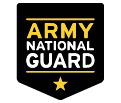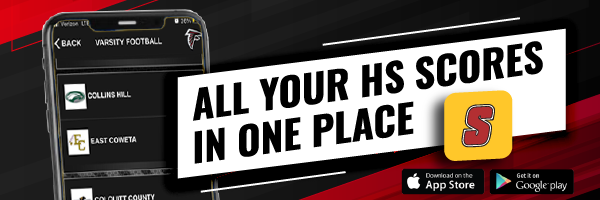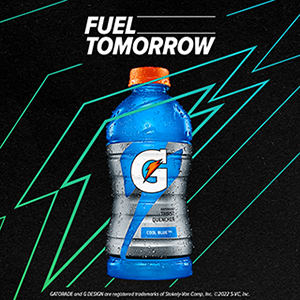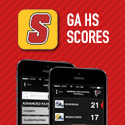The following article was written by Scott Bernarde for the AJC and can be read on AJC.com:
It all started with LeBron James. The interest in the NBA superstar was so great while he was a high-schooler that before he was the No. 1 draft pick in 2003, he was already a national media phenomenon.
ESPN was at the center of it all. It recognized that since viewers heard, read and saw video snippets of James, they would also be interested in seeing him live. The first LeBron game in 2002 drew the highest rating in almost two years for ESPN2, with an estimated 1.67 million viewers.
It’s a concept the broadcasting company has used effectively since in creating household names out of high school athletes.
Influenced by ESPN’s multi-platform ability, prep athletics are being covered like never before. Dozens of high school football and basketball games are shown on live TV. Football recruiting has its own season, culminating with National Signing Day (also with extensive ESPN coverage) on Wednesday. Online recruiting services offer up the latest news on which colleges kids will attend.
And even live webcasts of prep games are popping up everywhere.
“I’d like [for ESPN] to take credit for that,” Dan Margulis, ESPN’s director of programming and acquisitions, said of the surge of high school exposure, “but I think it’s just technology catching up.”
It’s clear ESPN has shown the way. While high school content provides great story-telling opportunities, the star power of top players and programs are the top considerations when the network selects games to televise. Those are players who may eventually play on ESPN as collegians and benefit the network’s huge college football platform.
“We explain who these kids are and why you should watch,” said Margulis, who added that while it’s not ESPN’s policy to share its TV ratings numbers, “we’re happy with them. … If the numbers aren’t there, we don’t do it.”
Even webcasters feel the impact of star players. Pete English, who produces Walton High School basketball, football and lacrosse games on PlayBallYall.com, says he sees significanttraffic from basketball fan blog sites for N.C. State, where Walton point guard Ryan Harrow has committed.
“The numbers are literally all over the country,” said English, a Walton parent who started streaming live games six years ago to help his daughters improve their games. “We could have as few as 125 people or we could have as many as 750. It matters how many D-I players are playing.”
Score Atlanta also has moved into the high school sports webcast business with partner PlayOn Sports. The Atlanta-based sports marketing company three years ago began webcasting regular-season football and basketball games for Georgia Public Broadcasting and the volleyball and wrestling state championships for the GHSA.
I.J. Rosenberg, president of Score Atlanta, said viewership numbers have been strong. The Northside-Warner Robins vs. Lowndes football game had 3,551 viewers watch it live, and 23,576 have watched it on demand.
The intense exposure of the athletes can be “a double-edge sword,” but mostly positive, said Corey Jarvis, the former M.L. King High football coach, whose Lions played DeKalb County rival Stephenson in mid-October on ESPNU.
DeKalb County received just $1,000 for the ESPN game, but the experience was worth more.
“I told them that if they had aspirations to play college ball, they would have to deal with this kind of attention anyway,” said Jarvis, now at Duluth High. “I felt all of the kids who played will end up better for it. It’s free exposure for your program and your kids. You can’t beat that.
“In a lot of ways, it’s good exposure. I guess sometimes it can be a negative. Sometimes kids may let themselves get a big head and think they’re better than they are.”
Margulis says the network stays mindful of the fact that it’s dealing with teenagers.
“I think we’re cognizant of it. It goes into our planning,” he said. “We keep the numbers [of telecasts; about 40 total for football and basketball] down so that it’s not overwhelming. …
“We put a premium when we are on-site to behave under certain standards. … As long as we do that, the feedback is rarely negative.”
The biggest potential for growth of high school sports coverage may be the Web. On top of recruiting services, YouTube video and even ESPN Rise and ESPN360.com, there are hundreds of live and archived high school games somewhere on the Internet.
Walton is one of a handful of schools that have live games online. An effort of parent volunteers, “Raidervision” includes play-to-play announcing, score banner, superimposed clock, split screen shots of the benches during timeouts, updated statistics and different camera angles. Games are archived and can be watched later.
“I figured that if we were going to do this, let’s do it right,” said English, who says he’ll often watch an ESPN telecast and wonder, “How can we do that?”
Kentucky-based iHigh.com also streams live games online, but it takes an all-inclusive approach. It provides the tools for schools to show games and produces some of its own. The company offers the service for free, in hopes it will generate its own advertising.
There have been 50 schools in Georgia join iHigh since July. The benefit is exposure – both to interested fans at home and potentially to college recruiters who can view archived games.
“There’s only so many games ESPN can show,” said iHigh CEO Tim Campbell. “We see it as a tip of the iceberg where you’re going to see dozens of [high school] sports getting exposure in the future.”






















































